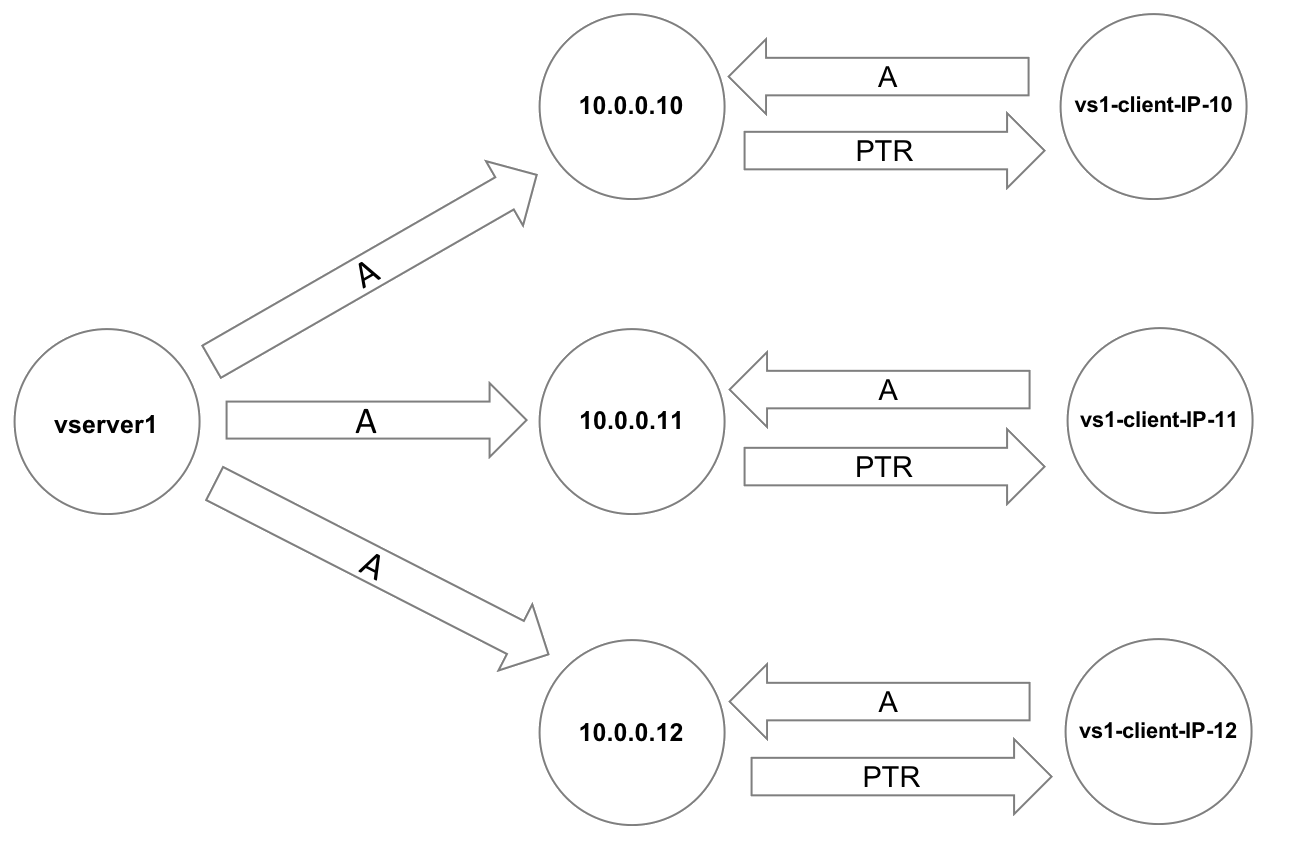3.3 KiB
Avere cluster DNS configuration
This section explains the basics of configuring a DNS system for load balancing your Avere vFXT cluster.
This document does not include instructions for setting up and managing a DNS server in the Azure environment.
Instead of using round-robin DNS to load-balance a vFXT cluster in Azure, consider using manual methods to assign IP addresses evenly among clients when they are mounted. Several methods are described in Mount the Avere cluster.
Keep these things in mind when deciding whether or not to use a DNS server:
-
If your system is accessed by NFS clients only, using DNS is not required - it is possible to specify all network addresses by using numeric IP addresses.
-
If your system supports SMB (CIFS) access, DNS is required, because you must specify a DNS domain for the Active Directory server.
-
DNS is required if you want to use Kerberos authentication.
Load balancing
To distribute the overall load, configure your DNS domain to use round-robin load distribution for client-facing IP addresses.
Configuration details
When clients access the cluster, RRDNS automatically balances their requests among all available interfaces.
For optimal performance, configure your DNS server to handle client-facing cluster addresses as shown in the following diagram.
A cluster vserver is shown on the left, and IP addresses appear in the center and on the right. Configure each client access point with A records and pointers as illustrated.
Each client-facing IP address must have a unique name for internal use by the cluster. (In this diagram, the client IPs are named vs1-client-IP-* for clarity, but in production you should probably use something more concise, like client*.)
Clients mount the cluster using the vserver name as the server argument.
Modify your DNS server’s named.conf file to set cyclic order for queries to your vserver. This option ensures that all of the available values are cycled through. Add a statement like the following:
options {
rrset-order {
class IN A name "vserver1.example.com" order cyclic;
};
};
The following nsupdate commands provide an example of configuring DNS correctly:
update add vserver1.example.com. 86400 A 10.0.0.10
update add vserver1.example.com. 86400 A 10.0.0.11
update add vserver1.example.com. 86400 A 10.0.0.12
update add vs1-client-IP-10.example.com. 86400 A 10.0.0.10
update add vs1-client-IP-11.example.com. 86400 A 10.0.0.11
update add vs1-client-IP-12.example.com. 86400 A 10.0.0.12
update add 10.0.0.10.in-addr.arpa. 86400 PTR vs1-client-IP-10.example.com
update add 11.0.0.10.in-addr.arpa. 86400 PTR vs1-client-IP-11.example.com
update add 12.0.0.10.in-addr.arpa. 86400 PTR vs1-client-IP-12.example.com
Cluster DNS settings
Specify the DNS server that the vFXT cluster uses in the Cluster > Administrative Network settings page. Settings on that page include:
- DNS server address
- DNS domain name
- DNS search domains
Read DNS Settings in the Cluster Configuration Guide for more details about using this page.
